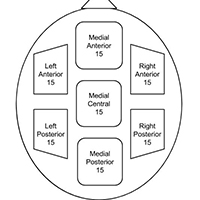Using high density EEG to assess TMS treatment in patients with schizophrenia

Accepted: 4 March 2020
HTML: 40
All claims expressed in this article are solely those of the authors and do not necessarily represent those of their affiliated organizations, or those of the publisher, the editors and the reviewers. Any product that may be evaluated in this article or claim that may be made by its manufacturer is not guaranteed or endorsed by the publisher.
Authors
We present preliminary results from the ongoing study entitled “Icelandic AVH-TMS” which aim is to study the effectiveness of repetitive transcranial magnetic stimulation (rTMS) treatment for patients with schizophrenia and with persistent auditory verbal hallucinations (AVH) using symptoms and psychometric scales and high-density EEG system (256 channels). The aim of the present work was to describe cortical topography of the auditory evoked responses like P50 and N100-P300 complex in healthy participants and patients with schizophrenia and to define a robust methodology of signal quantification using dense-array EEG. Preliminary data is shown for three healthy participants and three patients in baseline conditions and for two patients we show the results recorded before and after 10 days rTMS treatment. Our results show differences in sensory gating (P50 suppresion) and a stronger N100-P300 response to rare audio stimulus after the treatment. Moreover we show the value of assessing brain electrical activity from high-density EEG (256 channels) analyzing the results in different regions of interest. However, it is premature and hazardous to assume that rTMS treatment effectiveness in patients with AVH can be assessed using P50 suppression ratio.
How to Cite
PAGEPress has chosen to apply the Creative Commons Attribution NonCommercial 4.0 International License (CC BY-NC 4.0) to all manuscripts to be published.

 https://doi.org/10.4081/ejtm.2019.8903
https://doi.org/10.4081/ejtm.2019.8903




